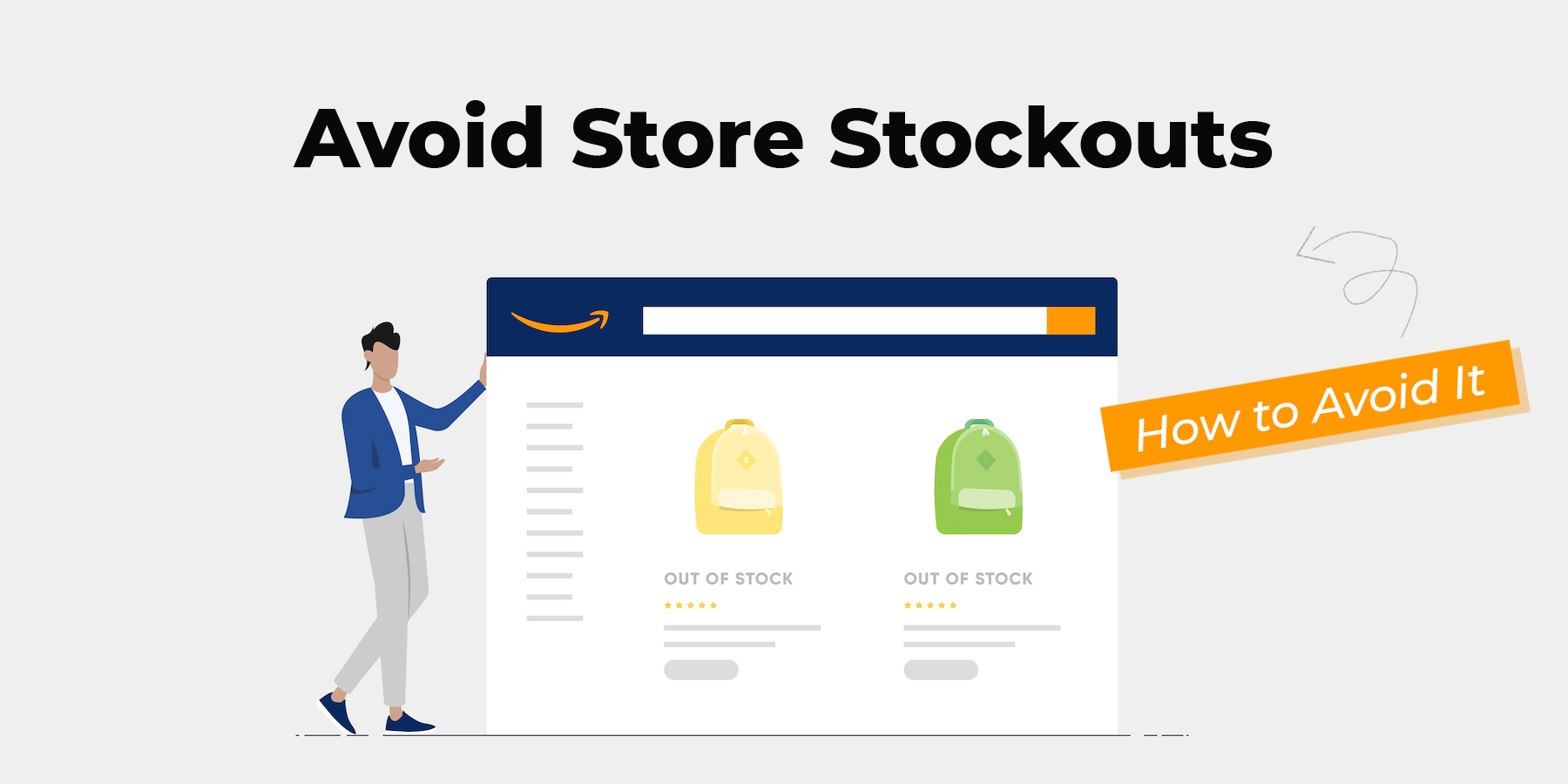When products fly off your shelves on the Amazon marketplace, your brand is doing well. It means all or some particular products you have are in demand. It also means that you need to maintain a good stock level for well-performing products on Amazon. Running out of stock (or stockouts) can negatively affect your Amazon listing, future sales, and brand reputation.
Therefore, Amazon order entry and management plays a vital role in assisting vendors to maintain their stock and keep their sales flowing.
Many people, especially beginners, think that Amazon inventory management is about listing product quantities in Amazon Seller central. However, it is much more than that.
To drive sales and rank at the top of Amazon's product search engine, you need to maintain cash flow, sales forecasting, order volume, etc. However, the platform makes it challenging for sellers to maintain healthy stock levels. It is because Amazon releases payments only twice a month.
However, sellers need to maintain Amazon inventory management and fulfill store orders regardless of these. Otherwise, there could be serious consequences of running out of Amazon inventory.
Risks of Running Out of Amazon Store Order & inventory
In local brick-and-mortar stores, running out of stock results in lost sales for that particular item. However, the case is far more complicated when it comes to Amazon.
Running out of stock affects your product listing and negatively affects your future sales. The major consequences of running out of inventory on Amazon involve:
Loss of Trust and Competitive Edge
Amazon rewards sellers with hot-selling products and exceptional customer service. But Amazon store stockouts can result in the loss of this privilege. It can also lead to a lost ranking of your products on the marketplace, no matter how best you've optimized your listings. Customers feel disappointed when products they want to buy from you run out of stock.
As a result, you will lose buyers' loyalty and trust in your brand on the Amazon marketplace. These ultimately lose sales, low Amazon search ranking, and a lost competitive edge.
Lost Revenue
The most obvious and serious consequence of Amazon store stockouts is lost revenue. For example, if someone places an Amazon store order for your product, but the item is out of stock, you lose the sale and profit from it.
As a result, people may buy the product from your competitor. In this way, you may lose the customer forever, which means fewer recurring sales in the future.
You won't be able to trade products that are not available in your stock. Moreover, Amazon does not approve the orders made for back-ordered articles.
Therefore, running down the inventory would surely decrease your product listing. So, you won't be able to generate any revenue out of the products unless your inventory is refilled.
Lower Product Ranking
Running out of inventory negatively impacts your shopping search results. According to the Amazon search ranking algorithm, the availability of the products is a key factor. It also determines the product ranking on the Amazon search engine.
Hence, if you run out of stock for a particular product, Amazon will not list your product. If this happens frequently, then there is a possibility that your Amazon product ranking will be knocked down. Finally, your product will appear in the last position even if your stock is full.
Lack of Seller Reviews and Latest Products
No sales mean no latest reviews on your products. In addition, it is quite tricky for Amazon visitors and shoppers to leave positive feedback on the product that does not appear in the search results. It might be a small thing. However, customer reviews have a very positive impact on the seller's profile and product listing.
Therefore, it is a must always to maintain your Amazon store order & inventory to make your product appear at the top of the Amazon search engine. In addition, it helps you get expected revenues, consistent sales, and positive feedback from your shoppers.
Customer Responses to Stockouts
As mentioned above, Amazon store stockouts can frustrate shoppers. As a result, they generally switch to your competitor on Amazon or choose another platform which is not a good sign in the eyes of the eCommerce giant.
Common consumer responses when you run out of Amazon store inventory and order:
- Switching stores or eCommerce platforms to purchase the same product.
- Consumers feel baited when they see that a heavily promoted or advertised product has gone out of stock. It can be detrimental to both your brand image and the Amazon store. It spoils your brand image and presents you as a bad-performing seller for the store.
- Loyal customers substitute a different variety or size of the same product.
- Sometimes, customers may even choose not to buy the product anywhere.
- When shoppers encounter an out-of-stock item before or after adding the product to their cart, they may abandon the store altogether. At the same time, they also ditch other products added to the cart.
Causes of Product Stock Outs on Amazon
You see how detrimental Amazon stock outs can be. So, it's the right time to act and prevent running out of stock. Before we talk about the solutions, let's quickly take a look at the most common causes behind the out-of-stock state:
Disparities between product counts
Four major causes of discrepancies between item counts are:
- Technical issues
- Human error
- Loss of products because of theft or damage (called shrinkage)
- A combination of the above issues
Inaccurate forecasting and reporting
An unexpected surge in consumer demand also causes inventory shortages. However, inadequate reporting and forecasting may also cause the issue.
Inadequate forecasting makes it inevitable that some buyers are disappointed when the item they need is unavailable.
Similarly, inaccurate reporting results in wrong decisions about inventory and other business aspects.
Logistic problem
Most of the Amazon order management issues are within the control of retailers. However, logistics-related issues can be challenging to deal with. This is especially when the pandemic has disrupted the global supply chain. Studies show that 38.8% of small businesses have experienced logistic delays because of the pandemic.
Poor cash flow management
Lack of enough cash means you cannot buy products to fulfill orders. This ultimately results in Amazon store stockouts and reduced sales.
How can Retailers Avoid Amazon Store Stockouts?
Many retailers work proactively to prevent "out-of-stock" situations. With careful planning and the right tools, it's easy to prevent Amazon store stockouts and keep your customers happy.
- Stay informed of suppliers' lead time: Lead time means how long it takes for suppliers to prepare the product for shipping from the date you send the purchase order. The lead time depends on your order quantity.
- Ask suppliers of monthly guaranteed production: This gives you a fair idea of how many backup suppliers you will need.
- Calculate the reorder point: How many units do you need to cover supplier lead times. This includes how long it takes to send them to purchase orders, the margin of error for delayed production or shipping, etc. As a result, you will know when to order by looking at your Restock Report in Seller Central.
- Always have a buffer: Always maintain a backup of your stock to prevent Amazon store stockouts.
In case you run out of stock:
- Pause your marketing campaigns for that product: Stop any ads, especially Amazon PPC, for your product listing that you cannot fulfill until you get more stock. This will reduce visibility and traffic to the product page out of stock.
- Increase the item's price: BE CAREFUL! Do this only if stopping your marketing efforts does not work. Increasing the cost may discourage people from buying from you in the meantime. But don't do this before pausing Amazon PPC because you don't want your customers to go to your competition.
While these efforts may affect your ranking, you can run promos and giveaways to recover your Amazon ranking. You can also run sponsored product ads to boost the organic ranking of your brand on Amazon.
Final Words
Amazon order processing and Amazon inventory management is a critical task to handle. But the process works to streamline operations and helps reach more customers for your business.
If you are looking for a complete solution to Amazon marketplace management, you should be keen on choosing your partner. Reach us at info@amazonlistingservice.com to get all your queries answered.






